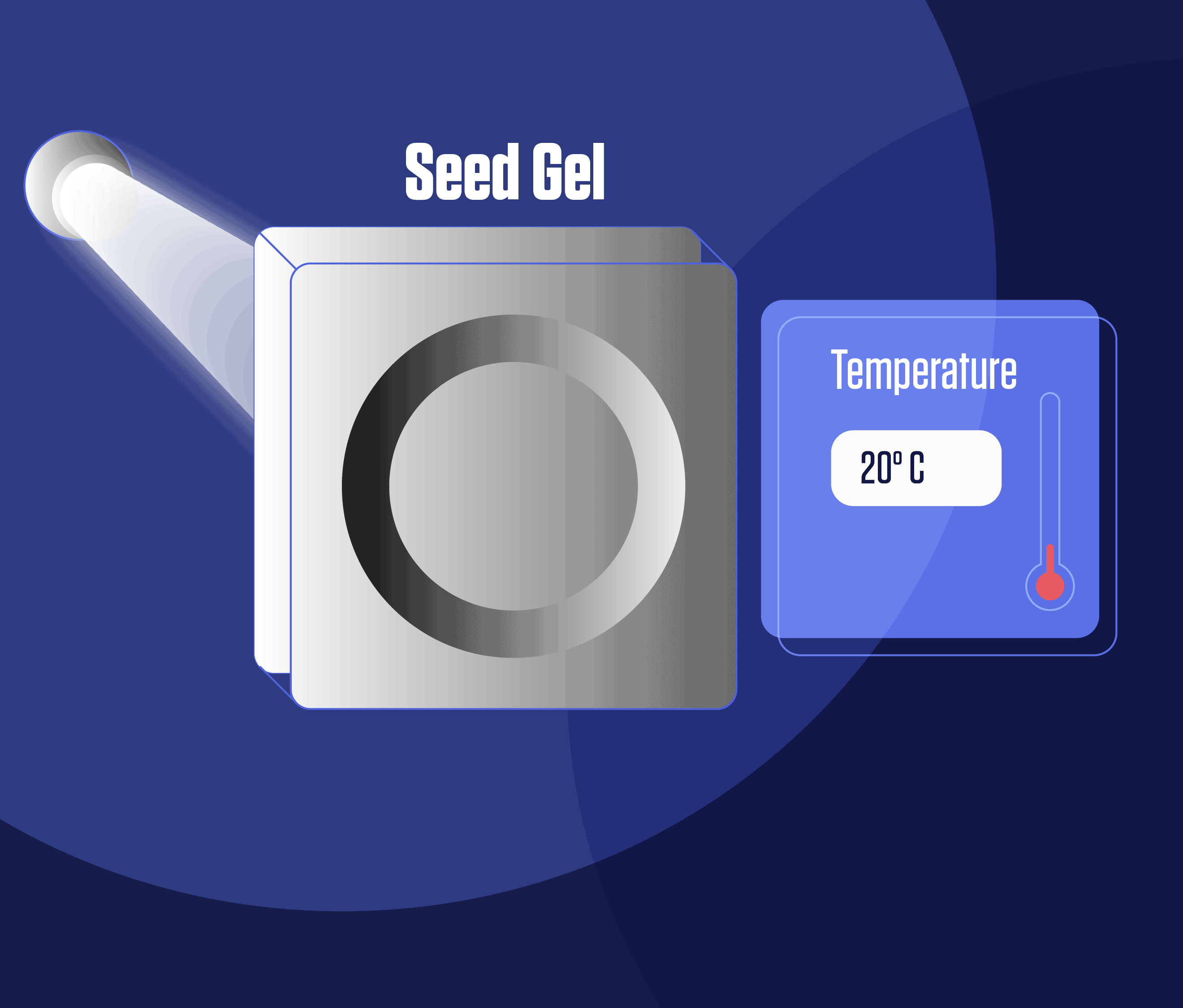| Jun 30, 2022 |
Novel nanoparticle gel proves itself to be highly tunable color filter
(Nanowerk News) Color these scientists happy. An exotic gel they studied at the National Institute of Standards and Technology (NIST) has an unexpected property: The material’s temperature determines which color of light can pass through it.
|
|
The material, which the research team calls “SeedGel,” already has shown promise as a multipurpose tool, with applications ranging from batteries to water filters to tissue engineering.
|
|
The team’s new paper, appearing in Nature Communications ("Finely Tunable Dynamical Coloration Using Bicontinuous Micrometer-Domains"), highlights the gel’s newfound capability as a temperature-sensitive light filter. Shine white light at the gel, and depending on the gel’s temperature, only a specific wavelength, or color, will pass through it.
|
|
A temperature change of less than a tenth of a degree Celsius can be enough to alter the permitted wavelength, which can be any color in the visible range as well as parts of the ultraviolet and infrared.
|
 |
| The SeedGel can function as a temperature-sensitive gate for a particular wavelength of light. Here, we see a representation of the light that passes through the gel. As it is heated through a specific range of temperatures, the gel first grows opaque to all but individual colors. Then as the heat rises, it first allows shorter, bluer wavelengths to pass through, then progressively longer, redder wavelengths. Eventually, once the temperature range is exceeded, the gel once again grows opaque to all visible light. (Image: N. Hanacek/NIST)
|
|
“Our previous work showed that the SeedGel can transform from clear to opaque and back again, but we did not explore what it can do with color,” said Yun Liu, who is both a scientist at the NIST Center for Neutron Research (NCNR) and a professor at the University of Delaware. “Its ability to control color precisely was a new discovery.”
|
|
The team’s creation is distinct from others that may be familiar from the marketplace. Don’t confuse it with a mood ring, whose thermochromic liquid crystals change color with temperature. Neither is it a variation on photochromic sunglass lenses, which darken when exposed to ultraviolet rays. Instead, the gel functions as a temperature-sensitive gate for a particular wavelength of light.
|
|
Their gel begins as a transparent fluid made of water and liquid solvents with silica nanoparticles added. If this mix is heated to a certain temperature, the liquids and nanoparticles will form a physical gel that initially remains transparent but now possesses a different internal structure. Instead of a formless fluid, the liquids form interlocking microscopic channels, with the nanoparticles confined within one of them.
|
|
As it is heated through a specific range of higher temperatures, the newly discovered effect appears: The gel grows opaque to all but individual colors, at first allowing shorter, bluer wavelengths to pass through, then progressively longer, redder wavelengths. Eventually, once this temperature range is exceeded, the gel grows opaque to all visible light.
|
|
Neutron scattering experiments performed at the NCNR explain this unusual behavior. Changing the temperature causes an exchange of liquid molecules between the microscopic channels, altering the overall refractive index of these channels. One wavelength of light gets through, but other colors get scattered.
|
|
The behavior is an example of the Christiansen effect, which was identified in 1884. Filters that rely on the Christiansen effect do exist, but the researchers indicate that their new gel offers distinct advantages to industry: Not only is their gel more sensitive to temperature changes, but the potential temperature range at which it operates is wider, as it can be customized to anywhere between 15 and 100 degrees Celsius. It can be tuned to cover a wide range of wavelengths, potentially from ultraviolet (from a bit under 400 nanometers) to near infrared (up to 2500 nanometers). And it permits more light to pass through than typical Christiansen filters do.
|
|
As the gel — regardless of customizations — is made of inexpensive, readily available materials, it offers advantages for industry, said Yuyin Xi, a team member from the University of Delaware.
|
|
“The approach is versatile with great tunability, and the manufacturing process can be easily scaled up,” he said. “It is a promising candidate for use in a range of smart optical devices and new classes of materials that have color applications.”
|

